Timpani |Hinger Timpani
In a musical career that has spanned the course of forty years, I have used many makes and models of timpani, ranging from the old Ludwig Universals of my junior high school days, all the way up to the Hinger Touch-Tone Timpani of my professional career. I suppose I should be chronological about the matter, and start with the old Ludwigs, but I have decided to start instead with the Hinger Touch-Tone timpani. I have used these fine instruments on and off for a period of about twenty years, give or take a year or two, starting with my college days at Manhattan School of Music..
My mentor was Fred D. Hinger, and when I joined his studio seriously in the fall of 1971, he was already deep into the design and manufacturer of what he called the Hinger Touch-Tone timpani. He was already making excellent timpani mallets as well as snare drum sticks, bass drum and xylophone and marimba mallets, but his main focus was in the design of a timpano that he
felt would solve the problems of what to do with a worn out beating spot without having to change the timpani head. Now, mind you, he was thinking in terms of calfskin heads, as he was a lifelong devotee of calfskin, and he came up with an ingenious solution to the problem. What he proposed was to place the entire drum (head, counter hoop, tension rods, and kettle) on a plate on top of the regular base, which would allow for the entire kettle to be rotated by loosening the tension via the use of the master tuning handle, and in this manner allowing the player to choose a new beating spot. In addition, he placed the master tuning handle by the player’s side of the timpani, rather than across the drum as had been the common practice for
most Dresden-style timpani up to that time. The latter idea was not new, as it had already been put into practice by the noted German timpani manufacturer and designer, Gunter Ringer. However, the idea for the rotating beating spot was new and was a good selling point.
The timpani were designed to be played in what we now call the “American” placement – starting on the left with sizes 31 inch, and going up from 28 inch, 25 inch and 22 ½ inch. He also manufactured a 20 inch when asked. The drums used bowls made by D. Picking of Bucyrus, Ohio. The original sets came with the bowls shaped in what I call a modified “champagne glass” shape – a modified half-sphere which Dan favored. The sound was very full, especially in the lower register and was also good on the 28 and 25 inch drums. The drums were fantastic with calf skin, the pre-1981 Remo heads, and the old Premier heads as well as the Remo Renaissance heads.
My First Contact with Hinger Timpani
In the summer and fall of 1972, the Manhattan School of Music contracted with Dan Hinger for a set of four Hinger Touch-Tone timpani – complete with head protectors and covers, and in the sizes I mentioned above. The students (including yours truly) were all excited and could hardly wait for the day of their arrival. It would be a new era for us when those drums joined the school inventory. Before they even arrived, strict limits were being placed on their usage: They were to be used mainly by the Manhattan Orchestra and Chamber Orchestra on stage in Borden Auditorium and in rehearsals of both orchestras in Room 610. They were not to be used in the opera pit at all and under any circumstance. This protocol was followed strictly until my graduate year, when the Rep Orchestra used them for a performance of Stravinsky’s Mavra.
I was not completely unfamiliar with the drums as Mr. Hinger, as he finished building a set of drums, would use them for a few weeks in the studio and “play them in” and also have the students have their timpani lessons on each set. I remember being impressed with them, and how solidly built they were. The frames were sturdily built, and each drum
was heavy, what with the extra plate. It was nice to have the master tuning handle at the player’s side, but aside from an hour’s lesson a week on them, that was about all we got with them.
The timpani arrived at Borden Auditorium on a weekday in the late fall of 1972, and Dan Hinger himself was on hand to supervise delivery and to introduce them to the percussion students. I remember him carefully removing the covers and explaining how these drums were to be properly cared for. I remember the instructions that he had typed and taped to the head protector of each drum. His instructions were precise, and he reiterated them. He also agreed with the protocol about using them only for orchestral and wind symphony concerts, leaving them out of the pit for the moment. I did not like that protocol one bit, but it was practical. The drums were heavy, and it would have been hard to get them down into the pit without a lot of help, which was not always forthcoming, hence the protocol.
I got to play them on many occasions from 1973 on until I graduated. While I still used the Ludwigs for opera performances, I used the Hingers in both Manhattan Orchestra and Chamber performances. Some of the performances were at Riverside Church, in collaboration with the organist of Riverside Church at the time, the excellent Frederick Swann, who was also Professor of Organ at MSM. I remember one performance during my graduate year, in which I had to walk the timpani over to the church and back before and after the rehearsals and performance. Good things those covers and drums were tough, and luckily the church was literally a block and a half away from the school. Still, it wasn’t easy walking those drums over to the church.
My Next Opportunities
Aside from the brief five weeks in Aspen, Colorado, where I had limited contact with the Hinger timpani at the Festival, and a couple of concerts with the ill-fated New York Symphony, I did not have much of an opportunity to play on Hinger timpani after I graduated from Manhattan School of Music in 1975. It wasn’t until I moved to Albany, New York where I accepted the position of timpanist of the Albany Symphony Orchestra in the fall of 1977 that I had my next opportunity. Even then, I had to wait until nearly the end
of the first season before that opportunity presented itself. When I first started with the orchestra, they were using a set of Ludwig Standard Symphony timpani, ca. 1960 vintage. Unfortunately, these instruments were not kept in the best of shape. The 28 inch was so out of round that I used it only when I had to. My first concert at the Palace Theater included Richard Strauss’ “Also Sprach Zarathusthra”. I was forced to play the opening on the 25 inch and 30 inch. Thankfully, those two drums “sang” well enough. To make a long story short, I established enough credit musically and professionally with the conductor and board president to make a case for replacing the Ludwigs – or at least to get another, better set of timpani. As it turned out, Paul Yanich had recently been appointed timpanist of the Atlanta Smphony, and was in the process of selling off the Hinger timpani that they had. Our board president heard about it, and personally bought the instruments for the Albany Symphony. There were only three of them – sizes 25 inch, 28 inch, and 31 inch, which meant that I used the 23 inch Ludwig for the top drum. They were well-maintained, and included drop covers and head protectors. The heads were Remo plastic (hazy), without the false back-bone. They came to the orchestra in time for the performance of Bliss’s “A Colour Symphony”, which is a wonderful piece requiring two timpanists. Our principal percussionist played second on the old Ludwigs (we borrowed a newer 23 inch for the top drum on my set). The Brahms 1st Piano Concerto followed, with Malcolm Frager as soloist. This was a concert that allowed me to put the drums through their paces, and it was also the first time that I played an entire concert on Hinger timpani, without having to share the concert with other students, as we did during my MSM days.
I used those drums for the remainder of my tenure at the ASO, which ended in the fall of 1980, when I left to go to the Evansville Philharmonic and Owensboro Symphony. I continued to have use of them for my last three summers at the Lake George Opera, and then of course, when I went to Oslo, Norway, I presided over a complete set for fifteen years.
My Take
To state it clearly, these are still my favorite timpani in terms of sound. The bowl shape – a perfect semi-circle –blends well. The bead on the edge of the kettle is not as sharp as it should be, unlike the Light drums whose bead is sharper. Because of this, the Hingers don’t take as well to plastic heads as
they do to calf. That being said, when I put either the Remo Renaissance or the clear or hazy Premier heads (unfortunately no longer available) on them, they sounded just fine. In fact, they sounded fantastic with the Premiers, but truth be told, they were always superb with calfskin.
If I had my way, I would have made the 23 inch a true 23 inch. I felt that the 22.5 inch was a bit too small, and anything below an f was shallow. Long after he had stopped making the drums, Dan told me that making the smaller timpani was the most difficult challenge that he had faced as a timpani manufacturer. He himself was never completely satisfied with the smaller timpani, but that being said, he stood by his work.
Hinger-Light Retrofits
As the drums got older, and since Dan Hinger was no longer making the timpani, many individuals and organizations had their drums refurbished and/or rebuilt by the American Drum Company. This company, which was based in Denver, Colorado, was the premier manufacture of Dresden-style timpani in the United States until 2015, and it was managed by Marshall Light, son of the founder of the company, Walter Light. They did superlative work, and they were naturally the ones for people to go to get their drums in optimal performing condition. Many people wanted to
replace the kettles with deeper semi-flat or flat bottomed kettles. In addition to replacing the pawl and clutch, they had American Drum Mfg. Co. replace the original Picking kettles with bowls manufactured by the company; once this was done, the drums were cleaned, re-painted and sent back to their owners. They were, except for the frame and pedal mechanism and extra plate, new instruments. I played on a set of these owned by the Des Moines Symphony back in the winter of 2001. They were well-maintained, and had a set of Renaissance heads on them. I used them in a winter production of “La Boheme” that the Des Moines Metro Opera was doing at the Civic Center. I found them easy to use, and the tone was excellent, but it was not the same as the originals. The tone was clear, much more like the Light timpani (which are now my timpani of choice, as I have no access to Hinger drums). But it didn’t have that blend of sound that I was used to on the drums that I played on in Albany and Oslo. As good as these retrofits are, and they are good, you can’t call them Hinger drums any more. They are Hinger-Light timpani, or Hinger-Light retrofits.

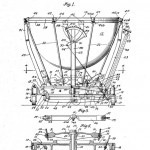
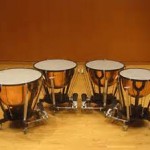
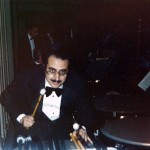
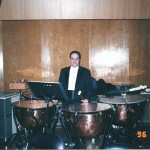
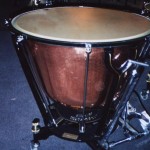
Recent Comments